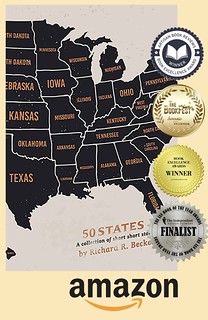The Recruiting Animal recently wondered whether there are some psychological tests that measure courage. It seems to make sense, given that courage is frequently cited as an important trait among leaders.
UMSC General Charles C. Krulak includes it among his fourteen basic traits of effective leadership, distinguishing two forms: physical and moral. U.S. Senator John McCain cited its importance as an enforcing virtue for five other virtues common among exceptional leaders a few years ago. And Ben Dean, Ph.D. at the University of Pennsylvania, wrote an interesting piece to define courage as well, citing a great C.S. Lewis quote that it is “not simply one of the virtues, but the form of every virtue at the testing point."
However, before considering which tests may or may not measure courage, I can’t help but wonder if fearlessness might be the better measure for business leaders. You see, the two terms — courage and fearlessness — are not the same.
Author Dr. Thomas Hora once pointed out that courage relies on the willful resistance to fear whereas fearlessness, based on a higher understanding, is effortless. While courage can be rooted in anger; fearlessness is rooted in clarity of vision. While courageous acts can be performed by frightened people; those who are fearless remain focused on sense of purpose rather than self-concern.
In fact, I often infuse the concept of fearlessness while teaching or coaching public relations professionals, advertising copywriters, spokespeople, and politicians. It’s in my lessons, just not overtly so.
Three examples of fearlessness in communication.
• It comes up when I challenge public relations students (many of them working professionals) with ethical dilemmas such as their supervisor asking them to misrepresent information.
Most students, fearful of retaliation and damage to their careers, chose to say nothing. A few courageous students suggest reporting the incident. Usually no more than one will suggest speaking with the supervisor first, which requires fearlessness.
• It comes up when I teach advertising. While I always suggest that the first rule of advertising is that there are no rules, I always give them ten. The tenth is allowing for the freedom to fail. That’s fearlessness.
While courageous copywriters will stand by their convictions and push their ideas forward, sometimes out of fear of being wrong; fearless copywriters, those who aren't afraid to fail, keep the client in mind.
• It comes up while coaching spokespeople and politicians on surviving aggressive interviewers. The most common challenge is working past their fears — forgetting a valid point, being wrong, sounding silly, etc.
While courageous spokespeople might take on an aggressive interviewer, it won’t mask their inability to respond to tough questions. Unless they are fearless, they are likely to become defensive, aggressive, or even angry (one client once took a swing at me during a mock media interview session).
The fearless spokesperson or politician, even when they don’t know the answer, remains composed, calm, and confident because they know their message and remain poised enough to deliver.
Can we really test for courage and do we want to?
While I was unsuccessful in finding a proven psychological test this morning (though firefighters are sometimes tested for courage), I did find an article by Pat Weisner about employee interviewing techniques.
Weisner suggests the test is simple enough: place the applicant on uncomfortable ground with questions like “’I don't think you have the experience to handle this job.’ Or ‘You haven't done anything to demonstrate how you would get into the mind of our customers (or the people you might manage) because you haven't done anything to find out what I'm thinking.’”
These two questions, not surprisingly, mirror those asked by “overly aggressive” interviewers. You can catch questions that are framed up just like this on the news; these, in particular, are called needling.
While needling and other aggressive questions do not often get at the truth, they sometimes test the interviewee on their confidence in the subject matter and own sense of self worth. Given this, an aggressive mock media interview could possibly reveal a candidate’s level of fearlessness, but each would have to be customized to be effective.
To test for courage, on the other hand, you might be better off asking them to apply for Fear Factor. But even so, since fearlessness and courage can be taught, why bother? Maybe we need to teach it more; there seems to be ample fear around and about social media.

UMSC General Charles C. Krulak includes it among his fourteen basic traits of effective leadership, distinguishing two forms: physical and moral. U.S. Senator John McCain cited its importance as an enforcing virtue for five other virtues common among exceptional leaders a few years ago. And Ben Dean, Ph.D. at the University of Pennsylvania, wrote an interesting piece to define courage as well, citing a great C.S. Lewis quote that it is “not simply one of the virtues, but the form of every virtue at the testing point."
However, before considering which tests may or may not measure courage, I can’t help but wonder if fearlessness might be the better measure for business leaders. You see, the two terms — courage and fearlessness — are not the same.
Author Dr. Thomas Hora once pointed out that courage relies on the willful resistance to fear whereas fearlessness, based on a higher understanding, is effortless. While courage can be rooted in anger; fearlessness is rooted in clarity of vision. While courageous acts can be performed by frightened people; those who are fearless remain focused on sense of purpose rather than self-concern.
In fact, I often infuse the concept of fearlessness while teaching or coaching public relations professionals, advertising copywriters, spokespeople, and politicians. It’s in my lessons, just not overtly so.
Three examples of fearlessness in communication.
• It comes up when I challenge public relations students (many of them working professionals) with ethical dilemmas such as their supervisor asking them to misrepresent information.
Most students, fearful of retaliation and damage to their careers, chose to say nothing. A few courageous students suggest reporting the incident. Usually no more than one will suggest speaking with the supervisor first, which requires fearlessness.
• It comes up when I teach advertising. While I always suggest that the first rule of advertising is that there are no rules, I always give them ten. The tenth is allowing for the freedom to fail. That’s fearlessness.
While courageous copywriters will stand by their convictions and push their ideas forward, sometimes out of fear of being wrong; fearless copywriters, those who aren't afraid to fail, keep the client in mind.
• It comes up while coaching spokespeople and politicians on surviving aggressive interviewers. The most common challenge is working past their fears — forgetting a valid point, being wrong, sounding silly, etc.
While courageous spokespeople might take on an aggressive interviewer, it won’t mask their inability to respond to tough questions. Unless they are fearless, they are likely to become defensive, aggressive, or even angry (one client once took a swing at me during a mock media interview session).
The fearless spokesperson or politician, even when they don’t know the answer, remains composed, calm, and confident because they know their message and remain poised enough to deliver.
Can we really test for courage and do we want to?
While I was unsuccessful in finding a proven psychological test this morning (though firefighters are sometimes tested for courage), I did find an article by Pat Weisner about employee interviewing techniques.
Weisner suggests the test is simple enough: place the applicant on uncomfortable ground with questions like “’I don't think you have the experience to handle this job.’ Or ‘You haven't done anything to demonstrate how you would get into the mind of our customers (or the people you might manage) because you haven't done anything to find out what I'm thinking.’”
These two questions, not surprisingly, mirror those asked by “overly aggressive” interviewers. You can catch questions that are framed up just like this on the news; these, in particular, are called needling.
While needling and other aggressive questions do not often get at the truth, they sometimes test the interviewee on their confidence in the subject matter and own sense of self worth. Given this, an aggressive mock media interview could possibly reveal a candidate’s level of fearlessness, but each would have to be customized to be effective.
To test for courage, on the other hand, you might be better off asking them to apply for Fear Factor. But even so, since fearlessness and courage can be taught, why bother? Maybe we need to teach it more; there seems to be ample fear around and about social media.






















